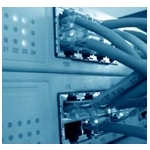 Akamai found global increases but U.S. decreases in broadband adoption rates between the first and second quarter of 2016. South Korea topped Akamai’s 2Q 2016 global ranking of average national Internet connection speeds at 27 Mbps. Norway (20.1 Mbps), Hong Kong (19.5), Sweden (18.8) and Switzerland (18.3) rounded out the top five. The U.S. failed to make the top 10, either in terms of average overall or average peak connection speeds.
Akamai found global increases but U.S. decreases in broadband adoption rates between the first and second quarter of 2016. South Korea topped Akamai’s 2Q 2016 global ranking of average national Internet connection speeds at 27 Mbps. Norway (20.1 Mbps), Hong Kong (19.5), Sweden (18.8) and Switzerland (18.3) rounded out the top five. The U.S. failed to make the top 10, either in terms of average overall or average peak connection speeds.
More broadly, global average connection speed dropped 2.3% to 6.1 Mbps on a sequential quarterly basis but rose 14% year-over-year across Akamai’s content delivery network (CDN), the Cambridge, Mass.-based company highlights in a news release.
At 36.0 Mbps, global average peak connection speed rose 2.5% year-over-year.
The year-over-year increases bode well for retailers as they gear up for the year-end holiday shopping season, Akamai notes. “The continued increase in average connection speeds is a reassuring trend as online retailers prepare for the busy holiday shopping season,” State of the Internet Report editor David Belson was quoted as saying.
“However, recent Internet disruptions caused by everything from government-ordered blackouts to a lone monkey sparking a widespread outage are reminders of the many factors that can affect access to and use of the Internet that is so often taken for granted.”
A total of 105 of the 148 countries/regions covered in Akamai’s 2Q State of the Internet report saw quarterly increases in average peak connection speeds as compared to 123 in 1Q. On the downside, 43 experienced lower 2Q average peak connection speeds as compared to 23 in 1Q.
Broadband adoption rates at speeds of at least 4 Mbps came in at 76% globally in 2Q, up 4.3% quarterly.
Adoption of 10 Mbps broadband rose as well, 0.7% quarterly to 35%. The global adoption rate of services with speeds above 10 Mbps rose also, increasing 0.7% quarterly. Broadband adoption rates for 15 Mbps and 25 Mbps services dropped 0.8% and 2.1%, respectively, however.
U.S. Results
The U.S. failed to crack Akamai’s top 10 in all categories. Thirty-three U.S. states posted quarterly declines in 4 Mbps broadband adoption in 2Q as compared to just one in 1Q.
The declines were modest, however, Akamai notes. They ranged from 0.1% in Tennessee (88% adoption), Nevada (89% adoption), Florida (91%) and New Jersey (94%) to 3.1% in Delaware (95%).
Rhode Island topped the ranks of U.S. states in three broadband categories with 96% above 4 Mbps, 76% above 10 Mbps and 52% above 15 Mbps. D.C. took top honors with 28% of its connections faster than 25 Mbps.
Average connection speeds among the top 10 U.S. states reversed the upward course taken during the previous few quarters. Declines were posted in 7 of the top 10 states. One remained unchanged and two others registered small increases.
The District of Columbia held on to the top spot, posting the largest quarterly gain (1.5%) among the top 10. Maryland posted the only other quarterly gain at 1.1%. Losses ranged from 0.7% in New Jersey to 7.8% in Delaware, while Virginia’s average connection speed remained unchanged from the first quarter, according to Akamai.
Regarding mobile connectivity, the U.S. ranked third in the Americas region, with Akamai recording an average mobile connection speed of 6.7 Mbps for 2Q. Canada was tops regionally at an average 8.4 Mbps and Peru ranked second at an average 6.9 Mbps.
IPv4 Address Exhaustion
In addition, Akamai found that the number of unique IPv4 addresses connecting to its CDN declined 1.0% quarterly to just over 800 million. That’s some 8 million fewer than was the case in 1Q´16.
About 4.3 million IPv4 addresses were allocated or assigned from available pools at the Regional Internet Registries in the second quarter. That left the remaining inventory of IPv4 address at approximately 50.5 million. There were 134.9 million unique IPv4 addresses active in the U.S., the nation with the largest number among those connected to Akamai’s CDN, as of end 2Q. That’s down 3.7% quarterly and 10% year-over-year, according to Akamai.

